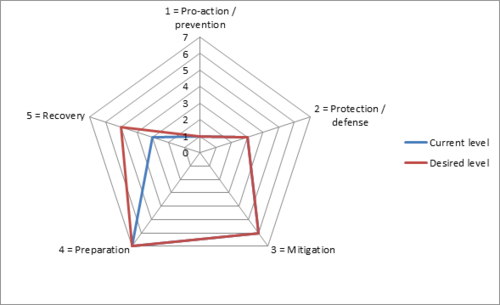Implementation process
Point of departure of FRM strategies
There are sluices by the water course, and small dikes on a side around 2 m to prevent flooding from the water course (interview pilot manager, 2019). In order to provide better flood protection, the city has invested in a flood gate at the bottom of river Omløbsåen where it meets another river, Vejle Å. When closed, the flood gate will prevent high water levels in the fjord from entering Omløbsåen, where it otherwise would cause flooding. Three motor-driven sluice gates are also located further upstream in Omløbsåen, allowing automated and remote control. However, sea-levels are expected to rise by 25 cm in the fjord by 2050, and it is at serious risk of flooding due to its low-level topography (DHI, 2019).
Currently, protection from the side of the fjord is on the agenda. Options discussed (DCA with the Vejle Municipality) are a sea wall barrier cutting off the harbor area or a major storm surge barrier in the same area that will close up the entire city during a storm surge. The storm surge barrier would cross the entire fjord and also function as a green area. A sluice will also be needed to hold back the water (interview pilot manager, 2019)
The new parts of the cities are built on raised terrain and they are also building higher foundations for the houses. This makes these areas flood proof without building a sea wall, but it might not be high enough considering the expected sea rise level (interview pilot manager, 2019).
This area was chosen as part of the project because it’s included in the risk areas of the Floods Directive and it is a member of the list of 100 resilient cities.
Desired score to reach per layer in this pilot (Baseline survey, 2019).
Stakeholders involved
- Danish Coastal Authority
- Municipality of Vejle
- Department of Technology and Environment
- Department of Planning, building and environment
- Department of Climate Adaptation
- One from water course (water and flooding in the city)
- Implementation of dikes
- Urban planning (city architect)
- PhD student from Aarhus University, focusing on awareness raising
Role of key actors
The Danish Coastal Authority is an independent agency under the Danish Ministry of Environment and Food. The authority’s functions include coastal and flooding protection and the administration of the state territorial waters. Moreover, the Danish Coastal Authority functions as adviser to The Minister of Environment and Food.
In this project, the DCA worked together with the municipality ole.
Main activities
Referenties
- 100 resilient cities, 100 resilient cities, 17 februari 2020.
- Improved flood control and water quality with a smart water solution, DHI, 17 februari 2020.
- Transnational Monitor and Evaluation report FRAMES, FRAMES, FRAMES, 8 juni 2020.
- FRAMES Monitoring survey Vejle, Thomson, Jumppanen Andersen and Geertsen, DCA and Vejle municipality, 9 januari 2019.

